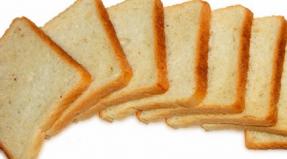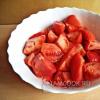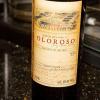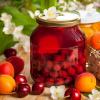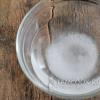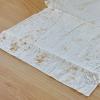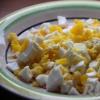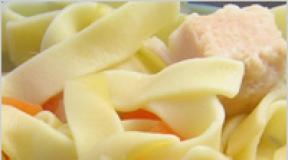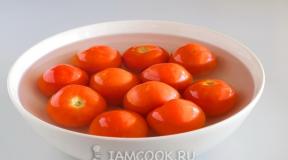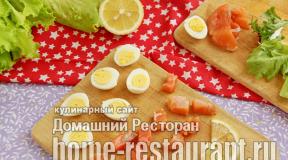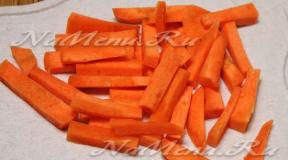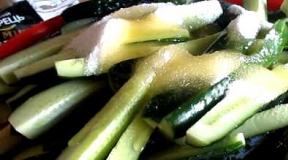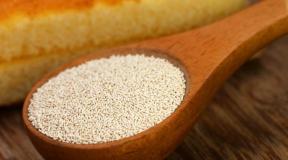Prepare noodle maker with cottage cheese using the technological map. How to cook the most delicious noodle soup with cottage cheese in a slow cooker and saucepan? Cooking option in a slow cooker
TECHNICAL AND TECHNOLOGICAL MAP No. Lapshevnik with cottage cheese
- APPLICATION AREA
This technical and technological map was developed in accordance with GOST 31987-2012 and applies to the Lapshevnik dish with cottage cheese produced by a public catering facility.
- REQUIREMENTS FOR RAW MATERIALS
Food raw materials, food products and semi-finished products used for preparing dishes must comply with the requirements of current regulatory documents, have accompanying documents confirming their safety and quality (certificate of conformity, sanitary-epidemiological report, safety and quality certificate, etc.)
3. RECIPE
| Consumption of raw materials and semi-finished products | |||||
| name of raw materials | 1 serving | 100 portions | |||
| gross, g | net, g | gross, kg | net, kg | ||
| HIGH-GRADE PASTA | 31,2 | 31,2 | 3,12 | 3,12 | |
| DRINKING WATER | 69,6 | 69,6 | 6,96 | 6,96 | |
| COOK 9% FAT | 44,4 | 43,6 | 4,44 | 4,36 | |
| CHICKEN EGGS (PCS.) | 0.13 pcs. | 4,6 | 13 pcs. | 0,46 | |
| GRANTED SUGAR | 4,6 | 4,6 | 0,46 | 0,46 | |
| REFINED SUNFLOWER OIL | 2 | 2 | 0,2 | 0,2 | |
| SOUR CREAM 15% FAT | 2,7 | 2,6 | 0,27 | 0,26 | |
| BREADCRUMBS | 2 | 2 | 0,2 | 0,2 | |
Yield: 130 g
4. TECHNOLOGICAL PROCESS
Noodles, or pasta, or vermicelli are boiled without discarding. The pureed cottage cheese is mixed with cheese or eggs, salt and sugar. The mixture is combined with boiled pasta and placed on a baking sheet greased and sprinkled with breadcrumbs. The surface of the noodle maker is greased with sour cream and baked in the oven. When serving, cut into portions.
When leaving, the noodle maker is poured with boiled butter.
- REQUIREMENTS FOR DESIGN, SALE AND STORAGE
Serving: The dish is prepared according to the consumer’s order and used according to the recipe for the main dish. Shelf life and sales according to SanPin 2.3.2.1324-03, SanPin 2.3.6.1079-01 Note: the technological map was compiled on the basis of a development report.
When serving, cut into portions. When leaving, pour boiled butter over it.
The optimal serving temperature is 65° C.
- QUALITY AND SAFETY INDICATORS
6.1 Organoleptic quality indicators:
Appearance: neatly cut pieces in the form of diamonds or squares, drizzled with butter
Consistency: loose, juicy, soft
Color: crust – ruddy-golden, on the cut – from light cream to cream
Taste: moderately sweet with the natural acidity of freshly prepared cottage cheese, moderately salty
Smell: baked curd with pasta
6.2 Microbiological and physico-chemical indicators:
In terms of microbiological and physicochemical indicators, this dish meets the requirements of the technical regulations of the Customs Union “On the safety of food products” (TR CU 021/2011)
- FOOD AND ENERGY VALUE
Technological engineer.
1.Technology for preparing the dish: “Napshevnik with cottage cheese”
The cottage cheese is pureed, mixed with raw eggs, seasoned to taste with salt and sugar. Non-drained noodles or vermicelli are mixed at 60°C with prepared cottage cheese. The mixed mass is placed on a baking sheet, greased with oil and sprinkled with breadcrumbs, or in a mold. The surface is leveled, greased with sour cream and baked in an oven at a temperature of 250°C. The slightly chilled noodle soup is cut into pieces and served one at a time with butter, sour cream or sweet sauce.
2.Dish preparation technology: “Boiled meat”
Meat prepared for cooking (beef, lamb, goat, pork or veal) weighing up to 2 kg is placed in hot water, quickly brought to a boil, the foam is removed and cooked without boiling (at a temperature of 90°C) until cooked. With this cooking mode, the loss of soluble nutrients and water is reduced, the meat turns out juicy, and the cooking process occurs more evenly. To flavor the meat, add raw carrots, onions, parsley 30-40 minutes before the end of cooking, and salt 10-15 minutes before the end of cooking. You can add bay leaf and peppercorns.
The finished meat is cut across the grain into portions of 1-2 pieces. per serving (yield: 50,75,100 g), pour in hot broth, bring to a boil and store on a steam table so that it does not weather and dry out.
When leaving, a side dish is placed on a plate or dish, next to the meat, poured with butter or broth, sour cream with horseradish, red, onion sauces are served separately, or sauce is poured over the meat.
Beef is served with boiled potatoes, mashed potatoes, stewed vegetables, carrots or green peas in milk sauce, and crumbly porridge; lamb - better with steamed rice; pork with stewed cabbage. Beef and pork go well with red sauce, and lamb goes well with white sauce.
3.Dish preparation technology: “Rice casserole”
Add eggs, sugar to the viscous porridge cooled to 60°C; you can add raisins, dried apricots, and vanillin. The mass is mixed and spread on a baking sheet greased and sprinkled with breadcrumbs in a layer of up to 4 cm. The leveled surface of the casserole is greased with raw eggs and sour cream and baked in an oven at 250°C until golden brown. The slightly cooled casserole is cut into portions and served one at a time with sour cream, butter or sweet sauce.
Equipment and utensils: saucepan with a capacity of 0.5 liters, measuring cup, scales, tablespoon, frying pan, whisk, enamel tray or bowl, spatula, flat dinner plate.
Recipe: Noodles or vermicelli – 72 g, water – 160 g, cottage cheese – 100 g, eggs – ¼ pcs., sugar – 10 g, margarine – 5 g, sour cream – 5 g, crackers – 5 g, butter – 10 g. Yield – 310 g.
Cooking technology. Cooked vermicelli is mixed with pureed cottage cheese. The mass is placed on a frying pan (baking tray) greased and sprinkled with breadcrumbs, leveled, greased with sour cream and baked. When on holiday, serve with butter (sour cream) or sauce.
Sequence of work:
1. Boil water in a 0.5 liter saucepan. Place noodles (vermicelli) in boiling salted water. Stir, reduce heat and cook until tender. Remove from heat and cool to 60...70 o C.
2. Rub the cottage cheese, mix with a raw egg, season with salt and sugar to taste.
3. Mix slightly cooled pasta with prepared cottage cheese.
4. Place the mixed mass in a frying pan (baking tray), greased with oil and sprinkled with breadcrumbs. Smooth the surface with a spatula, grease with sour cream and bake at a temperature of 250 o C.
5. Cut the slightly cooled noodle soup into pieces and serve one at a time with butter, sour cream or sweet sauce.
2.4 Quality requirements Appearance of pasta. Pasta must have the correct shape. But small bends and curvatures of the products are allowed. The surface of products of extra egg and higher egg grades must be smooth; for other grades, roughness is allowed (for the extra grade, slightly perceptible roughness). The fracture of the products should be glassy. The color of the products is one-color, corresponding to the type of flour (cream for the extra grade, white for the highest grade, white with a yellowish or grayish tint for the first, light orange for products with the addition of tomato paste). Traces of unmixed products (white stripes and spots), as well as particles of bran in the form of dark dots and spots are not allowed in the products. Taste and smell of pasta. Products must have their characteristic taste and smell, without bitterness, sourness and other foreign tastes, mustiness, mold and other foreign odors. The taste and smell of products are determined before and after cooking. Taste and smell unusual for products can arise as a result of spoilage during storage, drying (dough souring) or when using low-quality flour. Contents of deformed products, scrap and crumbs. The fracture strength of pasta is standardized depending on the diameter of the product and the grade in the range from 70 to 800 gs. In pasta products, the standard regulates the content of deformed products (uncharacteristic of this type of product in shape or crushed, torn), scrap (straight or bent pasta with a length of 5–13.5 cm is considered scrap) and crumbs. Crumbs include pasta and feathers less than 5 cm long, horns less than 1 cm long, vermicelli less than 1.5 cm long, noodles less than 1.5–2 cm long. Deformed products are obtained when production technology is violated or flour is used that produces inelastic dough . Scrap and crumbs are formed due to mechanical impacts on products during packaging, transportation and storage, as well as during freezing of products, violation of the drying regime, the use of flour that is poor in gluten. Moisture and acidity of pasta. The humidity of products should not exceed 13% (in products for baby food 12%). The acidity of products should be no more than 3.5–4. Increased acidity of products occurs when the drying regime is violated or low-quality flour is used. Cookability and strength of pasta. Important indicators of the quality of products are their boilability and strength. Pasta after cooking for 10–20 minutes. (depending on the type) before readiness, they should increase in volume at least twice (in fact, they increase 3-4 times), be elastic, not sticky, and not form lumps. The boilability of products decreases slightly with increasing shelf life. When cooked until cooked, the products should not lose their shape, stick together, form lumps, or fall apart at the seams. Fragility (strength) is determined only for sized pasta. For this purpose, the pasta tube is placed on two racks - supports, and the middle of the tube is subjected to load until it breaks. The fragility of 1st grade straws must be at least 200 g, and 1st grade amateur pasta - 800 g. The boilability and strength of pasta depend on the quantity and quality of gluten. The good strength of pasta allows you to better preserve its integrity during transportation.Pasta with cottage cheese is a taste familiar from childhood. You can simply mix boiled pasta in a frying pan with sweetened cottage cheese and fry it in butter. Or you can make noodle maker with cottage cheese - a simple, quick and very tasty casserole in the oven.
Ingredients:
- 300 g cooked pasta or noodles
- 300 g dry cottage cheese with a fat content of 9% or more
- 2 medium eggs
- 2 tbsp. l. Sahara
- 1 sachet (8-10 g) vanilla sugar
- a pinch of salt in the cottage cheese
- 1-2 tbsp. l. sour cream
- 20-25 g butter
- 0.5-1 tbsp. l. breadcrumbs
This quantity of products is designed for approximately 3 servings.
Preparation:
To make noodles with cottage cheese tasty, it is advisable to fulfill two conditions:
1. pasta or noodles should be slightly undercooked
2. cottage cheese and already boiled pasta should be approximately equal in weight.
Boil the pasta in salted water according to the instructions on the package and, following the conditions, do not cook it a little.

Then drain the water through a colander and lightly rinse the pasta.

I had 300 g of cottage cheese, I took 130 g of dry pasta and got about 300 g of boiled pasta from it.
Break 2 eggs into a cup, add sugar, vanilla sugar, salt and beat lightly with a whisk. Then add cottage cheese.

Stir until smooth.

You can rub the cottage cheese through a sieve, but it seems to me that it is better not to do this. The tender pureed cottage cheese seems to dissolve in the pasta and in the finished noodle maker it feels weaker than the grainy one. Well, it's a matter of taste.
Place the pasta into the curd mixture and mix.

Grease a small baking dish with butter and sprinkle with breadcrumbs or semolina. I prepare noodle soup with cottage cheese in a silicone cake mold, which you don’t need to grease or sprinkle with anything at all, everything will come out just fine. But I always want to lubricate the walls and bottom with oil, which is what I do. This is probably an association from childhood, when pasta with cottage cheese was fried in butter.

Place the pasta with cottage cheese in the mold and smooth it out with a silicone spatula.

Spread a tablespoon of sour cream over the surface of the casserole and sprinkle with breadcrumbs. Place 20 g of butter, cut into thin pieces, on top.

Place the pan in the oven, heated to 180-190 degrees and bake the noodle maker with cottage cheese for 35-40 minutes until golden brown.

Cool the finished casserole until warm so that it holds its shape, transfer to a dish and cut into pieces.


